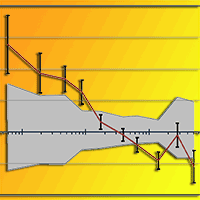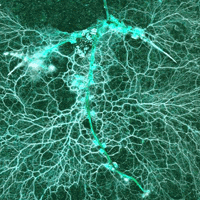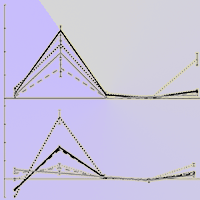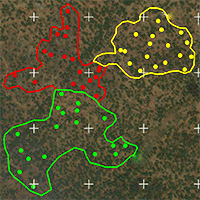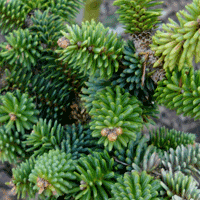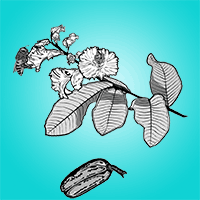
Analysis of growth of recruits of natural regeneration of Sorbus torminalis (L.) Crantz - a rare European forest tree species
Leszek Bednorz , Renata Nowinska
iForest - Biogeosciences and Forestry, Volume 11, Issue 1, Pages 72-78 (2018)
doi: https://doi.org/10.3832/ifor2347-010
Published: Jan 25, 2018 - Copyright © 2018 SISEF
Research Articles
Abstract
We compared growth and survival of wild service tree (Sorbus torminalis [L.] Crantz) recruits of different origin (generative: seedlings; vegetative: root suckers) established in a fenced plot at the Forest District of Krzyz (north-western Poland). Total height, annual growth of the dominant shoot, stem diameter at root collar, number of first-order branches, and mortality were measured every year over the period 2011-2015 (5 years). In 2011, a total of 382 multi-age recruits originated both from seeds (212) and root suckers (170) were recorded. Five-year mortality was higher in the generative progeny (12.3% - only youngest seedlings) as compared with vegetative recruits (2.9%). The growth rate of individuals markedly increased with height as absolute values, but slightly decreased in terms of relative growth. Statistical analysis revealed that the effect of the recruit origin on growth was noticeably weaker than that of age, defined in terms of development (height) classes. The origin of recruits had a major effect on the annual growth of the dominant shoots and a minor (though significant) effect on stem diameter and the number of first-order branches. Overall, the analysis of growth rate showed that generative recruits grow faster than the vegetative ones. Our results highlight the importance of stimulating the generative regeneration and protecting seedlings as a conservation strategy for Sorbus torminalis.
Keywords
Sorbus torminalis, Regeneration, Growth, Mortality, Seedlings, Root Suckers
Authors’ Info
Authors’ address
Renata Nowinska
Department of Botany, Poznan University of Life Sciences, Wojska Polskiego 71C, 60-625 Poznan (Poland)
Corresponding author
Paper Info
Citation
Bednorz L, Nowinska R (2018). Analysis of growth of recruits of natural regeneration of Sorbus torminalis (L.) Crantz - a rare European forest tree species. iForest 11: 72-78. - doi: 10.3832/ifor2347-010
Academic Editor
Emanuele Lingua
Paper history
Received: Jan 04, 2017
Accepted: Oct 25, 2017
First online: Jan 25, 2018
Publication Date: Feb 28, 2018
Publication Time: 3.07 months
Copyright Information
© SISEF - The Italian Society of Silviculture and Forest Ecology 2018
Open Access
This article is distributed under the terms of the Creative Commons Attribution-Non Commercial 4.0 International (https://creativecommons.org/licenses/by-nc/4.0/), which permits unrestricted use, distribution, and reproduction in any medium, provided you give appropriate credit to the original author(s) and the source, provide a link to the Creative Commons license, and indicate if changes were made.
Web Metrics
Breakdown by View Type
Article Usage
Total Article Views: 47329
(from publication date up to now)
Breakdown by View Type
HTML Page Views: 39870
Abstract Page Views: 2769
PDF Downloads: 3653
Citation/Reference Downloads: 15
XML Downloads: 1022
Web Metrics
Days since publication: 2888
Overall contacts: 47329
Avg. contacts per week: 114.72
Citation Metrics
Article Citations
Article citations are based on data periodically collected from the Clarivate Web of Science web site
(last update: Mar 2025)
Total number of cites (since 2018): 3
Average cites per year: 0.38
Publication Metrics
by Dimensions ©
Articles citing this article
List of the papers citing this article based on CrossRef Cited-by.
References
Jak chronić jarzab brekinie (Sorbus torminalis) w polskich lasach? [How to protect the wild service tree (Sorbus torminalis) in Polish forests?]. Sylwan 153 5: 354-360. [in Polish]
Gscholar
Dendrochronologiczna analiza jarzebu brekinii (Sorbus torminalis L.) w Polsce [Dendrochronological analysis of the wild service tree (Sorbus torminalis L.) in Poland]. ZAPOL Sobczyk Spólka Jawna, Szczecin, Poland, pp. 210. [in Polish]
Gscholar
Die Elsbeere (Sorbus torminalis [L.] Crantz) in Brandenburg [The wild service tree (Sorbus torminalis [L.] Crantz) in Brandenburg]. Der Wald 44: 232-235. [in German]
Gscholar
Die Elsbeere (Sorbus torminalis Crantz) im Weinviertel (Niederösterreich) [The wild service tree (Sorbus torminalis Crantz) in Weinviertel (Niederösterreich)]. Forst und Holz 58 21: 647-653. [in German]
Gscholar
Funktionen klonalen Wachstums von Bäumen bei der Brachflächen-Sukzession unter besonderer Berücksichtigung von Robinia pseudacacia [Functions of clonal growth of trees in the wasteland-succession with special attention of Robinia pseudoacacia]. Verhandlungen der Gesellschaft für Ökologie 26: 173-181. [in German]
Gscholar
Whitebeams, rowans and service trees of Britain and Irland. A monograph of British and Irish Sorbus L. BSBI Handbook no. 14, Botanical Society of the British Isles, London, UK, pp. 229.
Gscholar
Zur Gefährdung seltener Baumarten in der Schweiz: Grundsätzliche Überlegungen, Situationsanalyse und zwei Fallbeispiele [Endangerment of rare tree species in Switzerland: basic considerations, current situation and two examples]. Forest, Snow and Landscape Research 75 (1-2): 267-284. [in German]
Gscholar
Jungendwachstum und Schattentoleranz vegetativer Verjüngungen der Elsbeere (Sorbus torminalis Crantz) [Juvenile growth and shade tolerance of rootsucker regenerations of wild service tree (Sorbus torminalis Crantz). Forst und Holz 56: 11-15. [in German]
Gscholar
Importance of the wild service tree (Sorbus torminalis (L.) Crantz) progeny-provenance trials in ex-situ conservation. Monographs of Botanical Gardens 2: 65-75.
Gscholar
Klimat Polski w drugiej polowie XX wieku [Climate of Poland in the second half of XX century]. Wydawnictwo Naukowe UAM, Poznan, pp. 489. [in Polish]
Gscholar
The growth rate of rowan (Sorbus aucuparia L.) versus subalpine spruce stand breakdown. Sylwan 4: 38-45.
Gscholar

